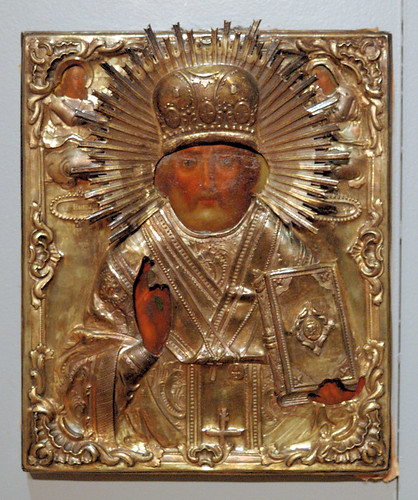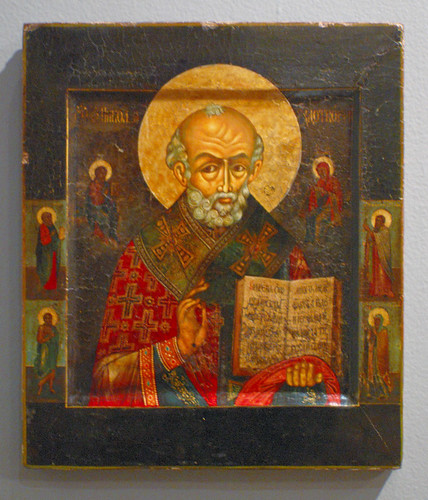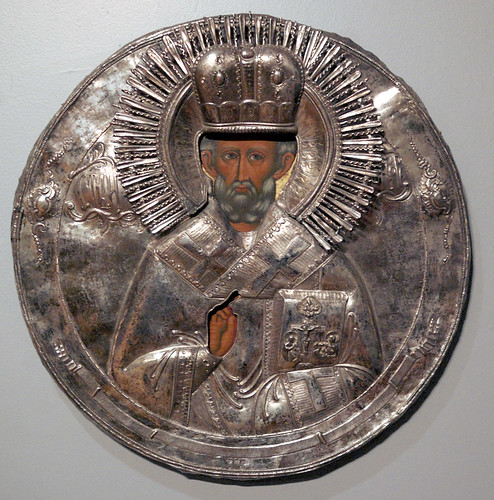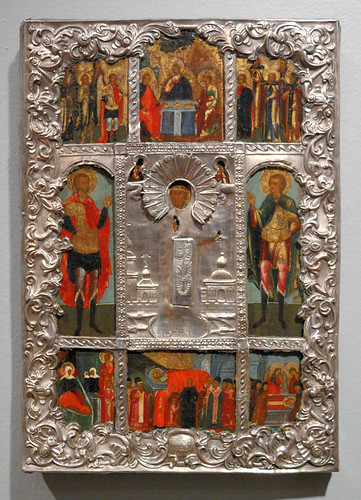The following Russian icons of Saint Nicholas are on display at the Saint Louis University Art Museum, as a part of the exhibit Relics of a Glorious Past. Imperial Russian Artifacts from the Collection of Dr. James F. Cooper. The exhibition closes on December 20th, 2009.






Saint Nicholas was Bishop of the Greek town of Myra, in Anatolia, Asia Minor, in what is now Turkey. He was reputed to have great holiness, and his episcopal See was said to be the only diocese which was not tainted by the heresy of Arianism.
Nicholas inherited wealth from his family, and was known for his charity. The most famous legend has the Saint saving three dowry-less girls from lives of prostitution by furtively throwing sacks of gold into their house. One version of the story has Nicholas throwing a bag of gold down the chimney, where it fell into one of the girl's stockings, drying over the embers. This is not only the origin of the Christmas custom, but these three bags of gold inspired the pawnbroker's symbol.
Nicholas was one of the earliest Saints who was not a martyr, and his veneration quickly spread to all parts of Christendom. Some claim that artistic depictions of this Saint are second only to the Blessed Virgin Mary, and that at least 2000 churches were built in his honor in Mediaeval France and Germany, and 400 more in England.
After the Seljuk invasion of Myra, Nicholas' relics were taken to Bari, Italy, where they remain. The Saint's crypt is in a basilica under the protection of the Dominican Order; and an Orthodox chapel is built on one side of the crypt. The “Manna of Saint Nicholas” is a liquid that oozes from the relics; roughly 50 milliliters of this liquid is collected annually, where it is diluted and distributed worldwide, and used as an ointment and for the blessing of ships and the seas.


No comments:
Post a Comment